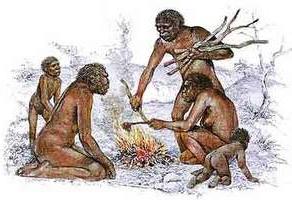Krebs cycle - the main stages and significance for biological systems
The bulk of the chemical energy of carbonis released under aerobic conditions with the participation of oxygen. The Krebs cycle is also called the cycle of citric acid, or cellular respiration. Many scientists took part in deciphering the individual reactions of this process: A. Szent-Gyorgyi, A. Lenringer, H. Krebs, whose name is the cycle, SE Severin and others.
Between anaerobic and aerobic digestioncarbohydrates there is a close correlation. First of all, it is expressed in the presence of pyruvic acid, which ends anaerobic digestion of carbohydrates and begins cellular respiration (Krebs cycle). Both phases are catalyzed by the same enzymes. The chemical energy is released during phosphorylation, it is reserved in the form of macroergs of ATP. In chemical reactions, the same coenzymes (NAD, NADP) and cations participate. The differences are as follows: if anaerobic digestion of carbohydrates is mainly localized in the hyaloplasm, the reactions of cellular respiration take place mainly in the mitochondria.
Under certain conditions antagonism is observedbetween both phases. Thus, in the presence of oxygen, the rate of the glycolysis reaction decreases sharply (Pasteur effect). The glycolysis products can inhibit the aerobic metabolism of carbohydrates (the Crabtree effect).
The Krebs cycle has a number of chemical reactions, inwhich result in the decomposition products of carbohydrates oxidized to carbon dioxide and water, and the chemical energy is accumulated in the macroergic compounds. During cellular respiration, a "carrier" - oxaloacetic acid (SHCHO) is formed. Subsequently, condensation occurs with the "carrier" of the activated acetic acid residue. There is tricarboxylic acid - lemon. In the course of chemical reactions, there is a "turnover" of the remainder of acetic acid in the cycle. Eighteen molecules of adenosine triphosphate are formed from each molecule of pyruvic acid. At the end of the cycle, a "carrier" is released that reacts with the new molecules of the activated acetic acid residue.
Krebs cycle: reactions
If the final product of anaerobic digestioncarbohydrates is lactic acid, then under the influence of lactate dehydrogenase it is oxidized to pyruvic acid. Part of the molecules of pyruvic acid goes to the synthesis of the "carrier" of the SHCH under the influence of the pyruvate carboxylase enzyme and in the presence of Mg2 + ions. Part of the molecules of pyruvic acid is the source of the formation of "active acetate" - acetylcoenzyme A (acetyl-CoA). The reaction is carried out under the influence of pyruvate dehydrogenase. Acetyl-CoA contains a macroergic bond, in which about 5-7% of the energy is accumulated. The bulk of the chemical energy is formed as a result of the oxidation of "active acetate".
Under the influence of citrate synthetase beginsActually the Krebs cycle itself, which leads to the formation of citric acid. This acid under the influence of aconitate hydratase is dehydrogenated and converted to cis-aconitic acid, which after the addition of the water molecule turns into an isomonic acid. Between the three tricarboxylic acids, a dynamic equilibrium is established.
Insoluble acid is oxidized tooxalo-succinic, which is decarboxylated and converted to alpha-ketoglutaric acid. The reaction is catalyzed by the enzyme isocitrate dehydrogenase. Alpha-ketoglutaric acid is decarboxylated under the influence of the enzyme 2-oxo- (alpha-keto) -glutarate dehydrogenase, resulting in the formation of succinyl CoA containing a macroergic linkage.
In the next step, succinyl-CoA under actionenzyme succinyl-CoA synthetase transmits a high-energy bond of GDF (guanosine diphosphate acid). GTP (guanosine triphosphate acid) under the influence of the enzyme GTP-adenylate kinase gives the macroergic connection of AMP (adenosine monophosphate acid). Krebs cycle: formulas - GTP + AMP - GDF + ADP.
Amber acid under the influence of enzymeSuccinate dehydrogenase (SDG) is oxidized to fumaric acid. The coenzyme of LDH is flavin adenine dinucleotide. Fumarate under the influence of the enzyme fumarate hydratase is converted into malic acid, which in turn is oxidized, forming SCOK. If the acetyl-CoA system is present in the reaction system, the SCOQ is again included in the tricarboxylic acid cycle.
So, from one molecule of glucose is formed up to 38ATP molecules (two due to anaerobic glycolysis, six due to the oxidation of two NADH + H + molecules that were formed during the glycolytic oxidoreduction, and 30 due to the CTC). The coefficient of efficiency of the TSC is 0.5. The remaining energy is dissipated in the form of heat. The CTC oxidizes 16-33% lactate acid, the rest of its mass goes to the resynthesis of glycogen.







